Tromsø, Norway 2 February – 5 February, 2026
Arctic Frontiers website for details
Academia Europaea Hub Bergen
Tromsø, Norway 2 February – 5 February, 2026
Arctic Frontiers website for details
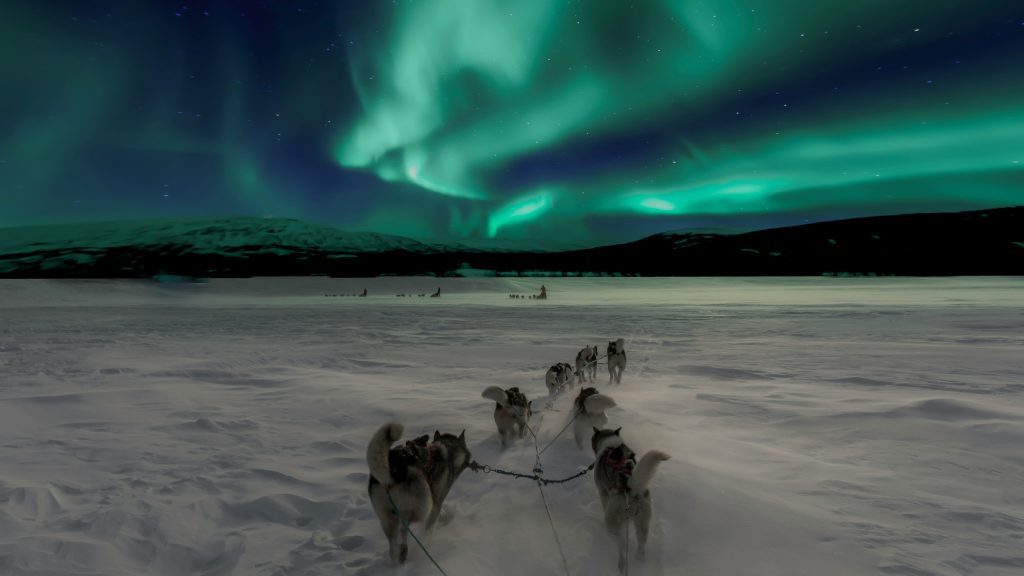
The geopolitical landscape following Russia’s invasion of Ukraine—and the atrocities that accompanied it—will have profound and lasting implications for academia, particularly regarding academic freedom, international collaboration, and scholarly exchange. Similar consequences are emerging from the devastation of the war in Gaza and other conflicts across the region.
In my message last year, I wrote: “The return of the Trump administration to power in the United States creates significant uncertainty for the role of rational, science-based governance in the world’s largest economy—uncertainty that is likely to reverberate throughout global academia.” This prediction has materialized in ways few of us could have imagined, with authoritarian efforts to undermine and destabilize universities, research institutions, funding bodies, and the very principles of academic freedom and institutional autonomy. In a remarkably short time, the environment in which science is conducted has changed dramatically. Security considerations in research have moved to the forefront, and discussions about the dual-use potential of research outcomes have become routine.
In this context, Europe’s role as a beacon of democracy, openness, and inclusion is more vital than ever. Safeguarding the values that underpin European research will be critical. Academia Europaea has an essential part to play in this effort. As a community of leading scholars across Europe, we have both the capacity and the responsibility to make a difference—and we must care enough to act.
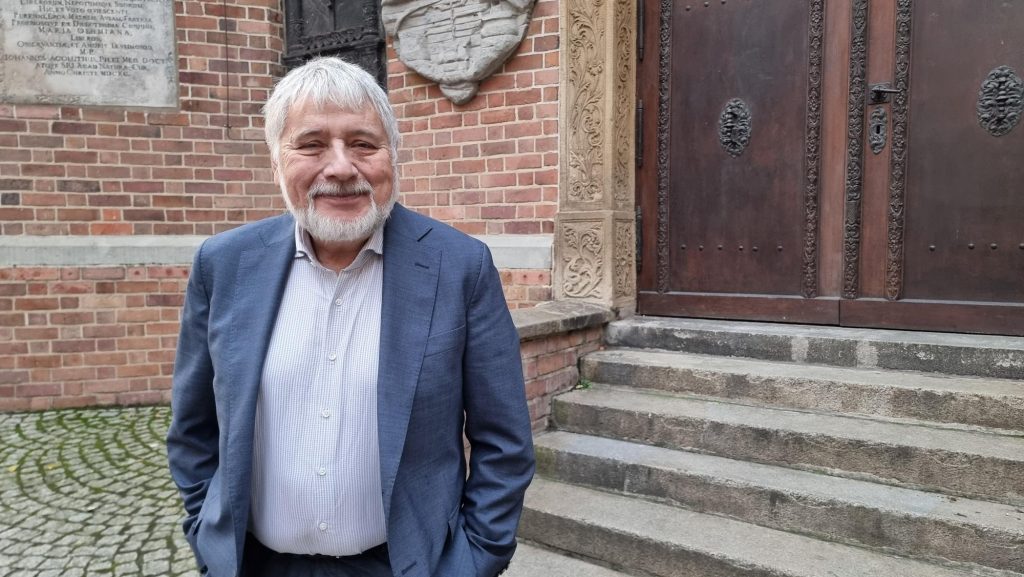
An essential part of this effort is to support Commission President von der Leyen’s call to “Choose Europe for science” and to engage with the vision for strengthening European competitiveness that underpins the proposed next Framework Programme for Research (FP10) for 2028–2034. European competitiveness depends not only on providing sufficient resources for our leading researchers and innovators—closing the widening gap with other global powers—but also, critically, on preserving the values of freedom and openness that lie at the heart of scientific inquiry. This is a unique opportunity for Europe, and it must be seized at this pivotal moment.

As Vice-President of the ERC and a Board member of our Academy, I have followed the early discussions on FP10 with great interest. The negotiations between the EU Council, Parliament, and Commission over the next one to two years will shape the future of European research. I urge you, as members, to be active in this process: use your networks and political contacts to ensure that fundamental science is recognized as the backbone of competitiveness. It deserves—and requires—more than the proposed doubling of the budget compared to Horizon Europe. This is the time to advocate for bold investment in science as Europe’s strategic advantage.
In 2025, the Hub has continued our engagement in exploring Arctic transformations through the lens of science diplomacy amid rising geopolitical tensions. We have led a cross-Atlantic project on this topic and organized several well-attended events on Arctic issues. I believe these efforts will help lay the groundwork for renewed collaboration and, hopefully, contribute to reducing tensions. We have continued co-hosting lecture series with local partners and maintained our support for the European Young Academy in running their activities.
As the year ends, so does my term as Hub Director. This has been an immensely rewarding experience, and I am more convinced than ever of the vital role of research and scientific inquiry—especially in the turbulent times we face. I am delighted that Professor Lise Øvreås will succeed me. She brings outstanding credentials to the role: an AE member, an accomplished microbiologist with significant Arctic research experience, and, crucially, a leader with broad overview and deep knowledge as past President of the Norwegian Academy of Science and Letters and incoming President of EASAC (the European Academies Science Advisory Council).
I wish you all a joyful festive season and an active year ahead. Please don’t hesitate to bring your ideas and initiatives to the Hub.
Best regards,
Eystein
From Cold War surveillance to climate-era innovation. Today, NORSAR’s cutting-edge array technology is not just listening for nuclear tests but helping ensure the safe storage of CO₂ beneath our feet. Bettina Goertz-Allmann presents how seismic arrays and microseismic monitoring unlock a safer path to net zero.
Lecture
26.11.2025 – 16.30–18.00
Realfagbygget, Allegaten 41, Auditorium 2
About the meeting (held in english)
NORSAR has played a pioneering and enduring role in advancing seismic array technology for the detection and analysis of earthquakes and underground nuclear explosions. Founded during the Cold War, it evolved from a research-driven institution into an integral component of global nuclear-test-ban verification, serving as Norway’s National Data Centre for the Comprehensive Nuclear-Test-Ban Treaty (CTBT) and operating certified International Monitoring System (IMS) stations in support of treaty compliance.
In recent years, NORSAR has expanded its expertise into the field of microseismic monitoring for Carbon Capture and Storage (CCS), applying decades of experience in seismic array design, subsurface imaging, and signal processing to address challenges associated with large-scale CO₂ injection.
A key development in this effort is NORFOX, a full-scale fibre-optic seismic monitoring facility installed in 2023 and co-located with a traditional seismometer array. NORFOX enables direct comparison between Distributed Acoustic Sensing (DAS) data and conventional seismological measurements, fostering advances in cost-effective, high-resolution monitoring of subsurface processes — including induced seismicity at CCS sites.
As global climate goals increasingly depend on the safe deployment of CCS at large scale, microseismic monitoring has become essential for assessing reservoir integrity, fault stability, and plume migration during CO₂ injection. Lessons from CCS sites such as In Salah (Algeria), Decatur (USA), and Quest (Canada) demonstrate the value of integrating microseismic data with geomechanical models and 3D seismic imaging to mitigate risk and build public confidence. Ongoing initiatives, including the Northern Lights project in Norway, continue to push the boundaries of seismic monitoring by combining onshore arrays with offshore fibre-optic networks to enhance event detectability near injection sites.
There will be time for questions after the presentation.
About the speaker
Bettina Goertz-Allmann is a senior researcher in the applied seismology group at NORSAR. She earned her PhD in 2008 with a focus on earthquake source physics at Scripps Institution of Oceanography, UCSD. Afterwards she spent some time as a post-doctoral researcher at the Swiss Seismological Service at ETH Zurich before she joined NORSAR in 2012. She has long experience of microseismic data analysis and earthquake source studies of both natural and induced seismicity. Since over a decade she focuses on analysis of induced microseismicity in Carbon Capture and Storage environments. In 2024 she was awarded the best-paper award of the International Journal of Greenhouse Gas Control.
Organisers
NTVA, Tekna Bergen and Academia Europaea Bergen.

– How many of you think there is politics in science, moderator Scott Bremer asked the audience at the start of the YAE (Young Academy of Europe) panel event “Public trust in science and navigating political tensions” at Building Bridges Barcelona conference. Most of the audience raised their hands.
Even as this very informal poll seemed to confirm the presence of politics in science, the rest of the panel focused on some of the more elusive disguises that politics can come in in science, such as barriers, taboos or self-censoring in the face of possible controversies.
The event was organised by the Young Academy of Europe and panellists were Anna Kuppuswamy from University of Leeds (also the new chair of YAE), Emilian Mihailov from University of Bucharest.
The final panellist was Ruth Rodriguez, a professor in the Department of Communication at Pompeu Fabra University. Her main lines of research are media accountability and disinformation.
In her presentation, Ruth Rodríguez spoke about knowledge transfer and the need to rethink its meaning for each discipline. She also mentioned the dimensions of media accountability, self-regulation, citizen participation, and transparency, which can serve as tools to strengthen innovation, democratic engagement, and connecting academia with society.
Unexplored territories can create barriers to science
Anna Kuppuswamy described her own field – neuroscience, and particularly her topic – the illness described as fatigue, as an area where politics can be a barrier to science.
– The illness of fatigue is an unexplored territory. All the uncertainties on what the causes of fatigue are, can create barriers to science, and these barriers can also come from the patients themselves. In my field, we’ve seen guidelines change without the changes being based in science.
– On the other hand, science takes place in a partnership with the wider society. Sometimes managing conflicts really is about handling misunderstandings. That’s something I see in my field of research on fatigue, Anna Kuppuswamy said.
Good science needs good politics
The YAE panel on the final day of the Building Bridges conference discussed multiple perspectives on how scientists – as individuals and as a group – navigate social and political polarization on the role and organisation of science in Europe today. The event explored the extent to which scientists work within a politicised context, and what affordances and strategies do they deploy to establish science’s role in society and relate to political trends.
– Good science needs good politics, and good politics will seek to foster freedom of thought. When scientist do their research in an environment where freedom of thought is not present, the possibility for self-censoring and taboos will increase, Emilian Mihailov said at the panel discussion.
On behalf of Academia Europaea and Wrocław University of Science and Technology, the AE Wrocław hub invites young scholars, researchers and artists to an intensive workshop focused on interdisciplinary practices. The event will take place on 28 October 2025 at Wrocław University of Science and Technology, as part of the accompanying events for the Interdisciplinary Art-Tech-Science Conference:
“Inter/Multi/Transdisciplinarity – New Networks of Knowledge: What Works, What Doesn’t, and Why It Matters”
The workshop is aimed at early-career researchers (Master’s students, PhD candidates, and postdoctoral researchers) who:
The program includes practical exercises, debates, case studies, and open discussions on the challenges, limitations, and potential failures of cross-disciplinary work. Participants will work in an international environment.
➡️ The workshop will be conducted in English
➡️ Participation is free, but registration is required:
More information about the event: Event’s webpage
Registration form:Participation Form

Foredraget vil presentere innovativ tenkning, design, og engineering innen området mobil Mobil menneske-maskin-interaksjon (HCI). Foredrag av Morten Fjeld som er professor ved UiB innen dette feltet.
Foto/ill.: COLOURBOX
Foredrag
16.09.2025 – 16.30–18.00
Realfagbygget, Allegaten 41, Auditorium 2
Om møtet (holdes på norsk)
Bruken av bærbare enheter finnes nå overalt i vårt samfunn. Våre daglige liv formes av stadig skiftende interaktive enheter og applikasjoner—fra berøringsbaserte smartklokker og nettbrett til store digitale skjermer.
Selv om smarte enheter som bærbare PCer, nettbrett og smarttelefoner er mobile, er brukerne som regel enten stillesittende, eller de risikerer sin egen fysiske sikkerhet ved å bruke slike enheter i bevegelse. De helsemessige konsekvensene av dagens mobile enheter er godt dokumentert. Disse inkluderer blant annet hvordan en hovedsakelig stillesittende livsstil påvirker helse og velvære.
Dette foredraget vil presentere innovativ tenkning, design, og engineering innen området mobil Mobil menneske-maskin-interaksjon (HCI).
Til slutt blir det tid til spørsmål fra salen.
Om foredragsholder
Morten Fjeld er professor innen human-computer interaction (HCI) ved Universitetet i Bergen og Chalmers tekniska högskola. Han forsker på interaktive systemer med fokus på tangible and mobile interaction. Fjeld har en dobbel mastergrad i anvendt matematikk fra NTNU og ENSIMAG Grenoble, samt en doktorgrad fra ETH Zürich, hvor han i 2002 også mottok ETH-medaljen. Han har vært gjesteprofessor i Singapore, Japan og Sveits, og har bred erfaring fra industrien innen fluidmekanikk, simulatorer, og brukergrensesnitt.
Arrangører
NTVA, Tekna Bergen og Academia Europaea Bergen.
Øvretveit ledet to debatter knyttet til norsk havpolitikk under Arendalsuka, med Havbyen Bergen som arrangør. Først ut «Sikkerhet i havdypet – Trusler og konsekvenser», med et panel bestående av statssekretær for fiskeri- og havministeren Even Tronstad Sagebakken, stortingskandidat for Sosialistisk Venstreparti Marthe Hammer, førsteamanuensis og hovedlærer i etterretning Tom Rødseth, samt Nils Gunnar Kvamstø – Administrerende direktør, Havforskningsinstituttet.
Nordområdene ar flere utfordringer enn noen gang. Klimaendringer, tap av biologisk mangfold, endringer i økosystemene og et internasjonalt klima som går fra samarbeid til mer rå maktpolitikk. Få steder merker vi dette tydeligere enn i nord, sa Øvretveit i sin innledning.
Debatten tok tak i hvilke konsekvenser den reduserte utvekslingen av forskningsdata med russiske forskere kan ha for fiskeriforskning.
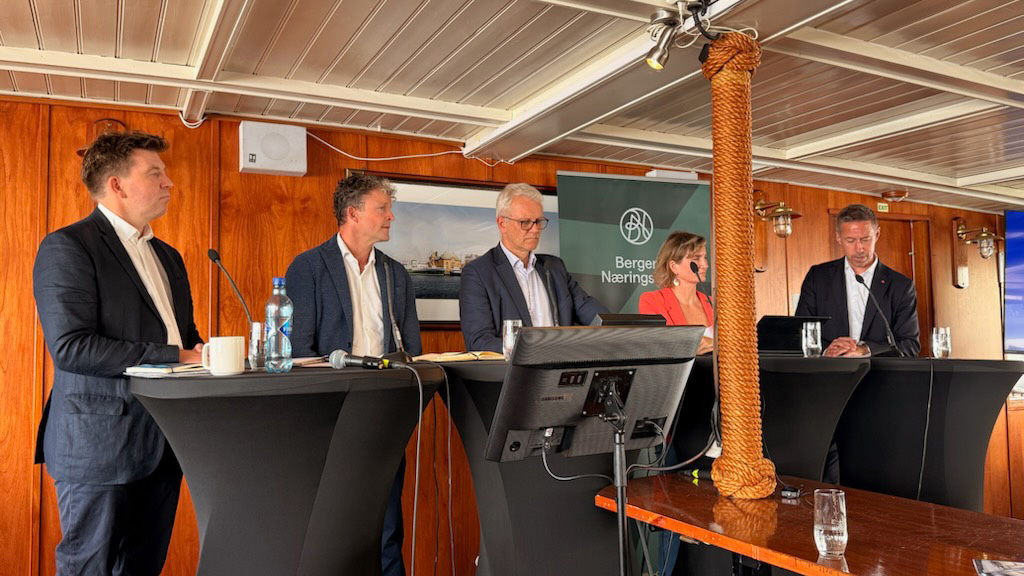
– Vi har en redusert tilgang på forskningsdata fra Russland, og det kan gi risiko for redusert kunnskapsgrunnlag for fiskerivirksomheten. Vi ser ikke konsekvenser at dette det første årene, men på flere års sikt kan man risikere at denne usikkerheten gir effekter av typen fare for overfiske, sa Nils Gunnar Kvamstø fra Havforskningsinstituttet i debatten.
Krever helhetlig tilnærming
– Det er også andre utfordringer. Forskere bør se på samlet effekt av den menneskelige aktiviteten i Nord-områdene og effekten av dette på økosystemene. Dette krever en større systemforståelse og en mer helhetlig tilnærming til utviklingen, sa Nils Gunnar Kvamstø fra Havforskningsinstituttet i debatten.
Tom Rødseth fra Forsvarets høgskole tok tak i spenningsfeltet mellom forskningsdeling og sikkerhetpolitikken.
– At forskere fra ulike nasjoner deler sine forskningsdata er med å gi økt kunnskap og på den måten positivt. Samtidig kan andre nasjoner ha andre interesser. Derfor må sikkerhetsaspektet være md i vurderingene, sa Rødseth i debatten.
Havbyen Bergens andre debatt om «Sikkerhet i havdypet» under Arendalsuka hadde undertittelen «løsninger og forretningsmuligheter». Her besto panelet av Kristina Sigurdsdottir Hansen, statssekretær for fiskeri- og havministeren, Camilla Sæthre, førsteamanuensis ved UiB og SFI Smart Ocean, Gisle Nondal, COO i GCE Ocean Technology og Rune Smistad, strategisk rådgiver i AquaCloud.
Diskusjonen tok utgangspunkt i hvordan forskningsmiljøer, oppstartsbedrifter, industrien og myndighetene kan samarbeide for å utvikle ny havteknologi og samtidig skape eksportmuligheter. – «Norge har både kompetansen, ressursene og historien til å ta en lederrolle – ikke bare politisk og militært, men også gjennom å utvikle et nytt marked for grønn, høyteknologisk næring,» het det i innledningen.
Deltakerne pekte på koblingen mellom sikkerhet og næringsutvikling, og på potensialet for Norge til å ta en mer offensiv internasjonal posisjon i utviklingen av undervannsteknologi. – «Hvis vi evner å koble industrien, forskningen og myndighetene tettere sammen, kan vi både styrke sikkerheten i havrommet og skape en ny arena for norsk eksport,» sa Camilla Sæthre. Gisle Nondal, pekte på muligheten for å skape en Norsk superklynge på hav og understreket at internasjonal posisjonering også krever tydeligere rammevilkår: – «Vi har miljøene og ideene, men uten riktige betingelser kan vi risikere at andre land tar ledelsen.». Rune Smistad på sin side pekte på at for et lite land er det viktig å samle seg på tvers av sektorer bak en felles plan.
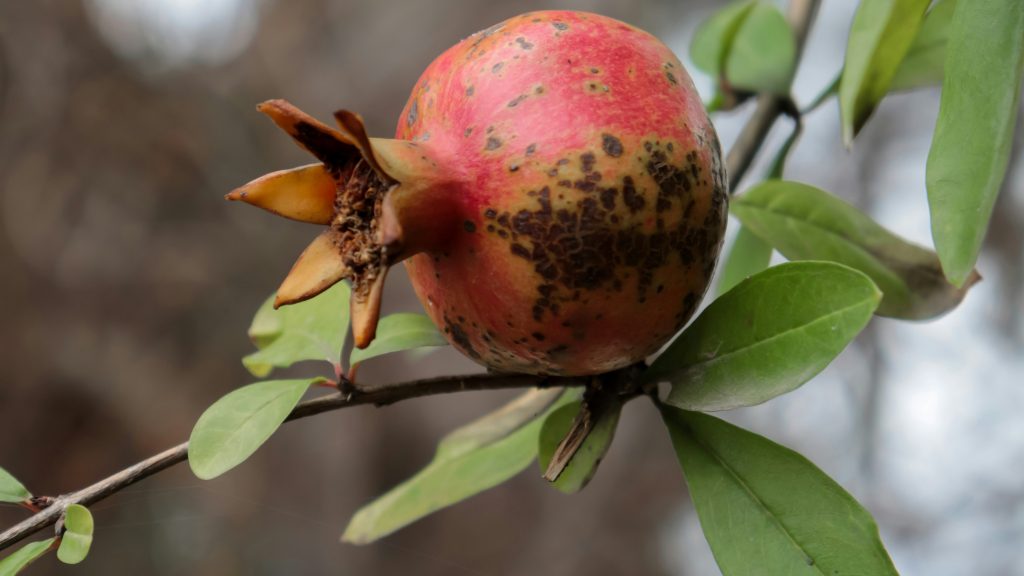
‘One Health’ is an integrated approach to optimising the health of humans, animals and ecosystems. It is supported and promoted by major bodies like the UN Environment Programme (UNEP), World Health Organization (WHO) and others.
Yet, many argue that One Health has evolved to focus heavily on human health, without paying enough attention to the vital connection it has with the environment and ecosystems, on which all life depends.
Our webinar, held on 17th July 2025, explored the questions: What is ‘One Health’, and what role does the sustainability of the environment and ecosystems play within it? How can we move One Health away from being so focused on humans and instead take a more balanced, truly interconnected approach that values all parts of the system—people, animals, and the environment? What real-world challenges stand in the way, and what could we do to overcome them?
Read more on the Academia Europaea Cardiff website and find link to the recording of the webinar.
TIRSDAG 12. AUGUST KLOKKEN 12.00 Sikkerhet i havdypet: Trusler og konsekvenser Her får du møte: Even Tronstad Sagebakken, Statssekretær for Fiskeri- og havministeren Marthe Hammer, Sosialistisk Venstreparti, Stortingskandidat Nils Gunnar Kvamstø, Havforskningsinstituttet, Administrerende direktør Tom Røseth, Forsvarets høgskole, Førsteamanuensis og hovedlærer i etterretning.Havdypet er den nye frontlinjen. Klimaendringer, tap av biologisk mangfold og økende stormaktsrivalisering gjør at det som skjer langt under havoverflaten, har økt strategisk betydning – både for sikkerhet, ressursforvaltning og for naturen vår. Rett utenfor kysten vår, er Nord-Atlanteren blitt en brikke i det geopolitiske spillet. På dette arrangementet ønsker vi å belyse hvilke trusler vi står overfor i havdypet – fra klima og miljø, til sabotasje og geopolitisk spenning. Hvordan påvirker disse truslene norske og europeiske interesser? Hvordan kan vi øke vår kunnskap og styrke vår beredskap? Hvordan påvirkes menneskene som bor i nordområdene av de geopolitiske spenningene? Vi samler representanter fra forsvaret, forskning, forvaltning og politikk for å belyse utfordringene i dypet. Arrangementet kan også strømmes live her: https://www.aostreaming.com/vestlandsbaaten-2025Ordstyrer er Ole Rasmus Øvretveit, forsker, Universitetet i Bergen. Arrangementet finner sted i Festsalen på M/S Sandnes. |
| TIRSDAG 12. AUGUST KLOKKEN 15.30 Sikkerhet i havdypet: Løsninger og forretningsmuligheter  Her får du møte Cecilie Myrseth, Næringsminister Camilla Sæthre, SFI Smart Ocean, Førsteamanuensis, Havteknologi / Måleteknologi (UIB) Gisle Nondal, GCE Ocean Technology, COO Rune Smistad, AquaCloud, Strategisk rådgiver dataSikkerhet skaper muligheter. Når truslene i havdypet vokser, vokser også behovet for teknologi, innovasjon og samarbeid. Norge har gode forutsetninger for å ta en lederrolle innen sikkerhet og bærekraftig forvaltning av havets dyp – ikke bare politisk og militært, men også som et nytt marked for grønn, høyteknologisk næring. På dette arrangementet ønsker vi å diskutere hvordan rammevilkår, investeringer og offentlig-privat samarbeid kan legge til rette for løsninger som både styrker sikkerheten og skaper verdier. Hvordan kan oppstartsbedrifter, industrien og myndigheter samarbeide for å møte utfordringene, og gripe mulighetene, i havdypet? Arrangementet kan også strømmes live her: https://www.aostreaming.com/vestlandsbaaten-2025Ordstyrer er Ole Rasmus Øvretveit, forsker, Universitetet i Bergen. Arrangementet finner sted i 1. klassesalong på M/S Sandnes. |
Following an intensive scrutiny process, the Board have accepted the recommendation of an independent search group who proposed Professor Donald B. Dingwell MAE for an approval by the Academia Europaea members.
An E-ballot of all eligible members was held between 17 – 30 June 2025.
His term will officially start at the AGM of members on 14th October 2025. He will serve a term of three years and is then eligible to be re-elected for a second and final term of three years.